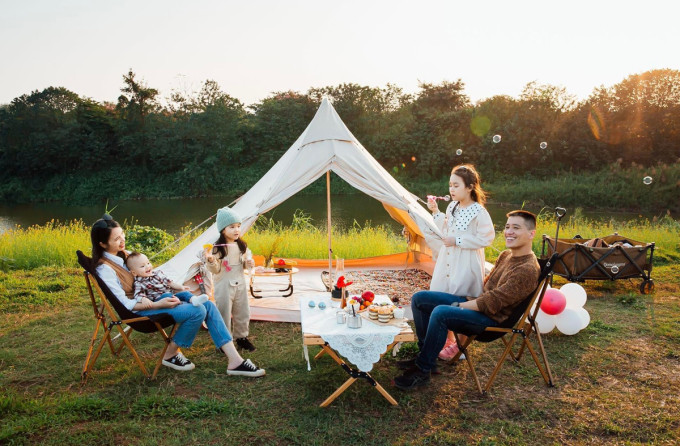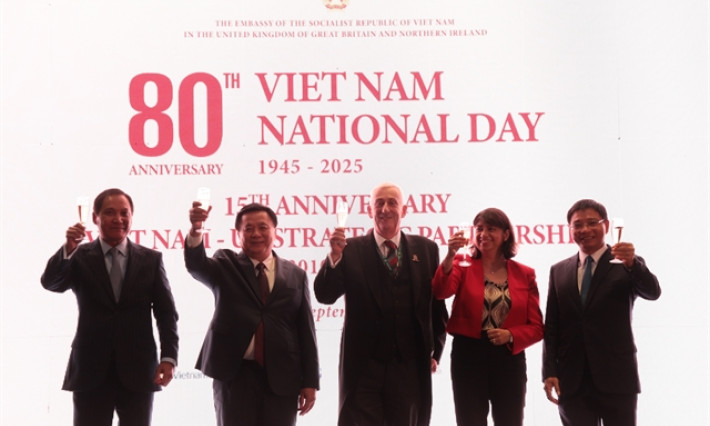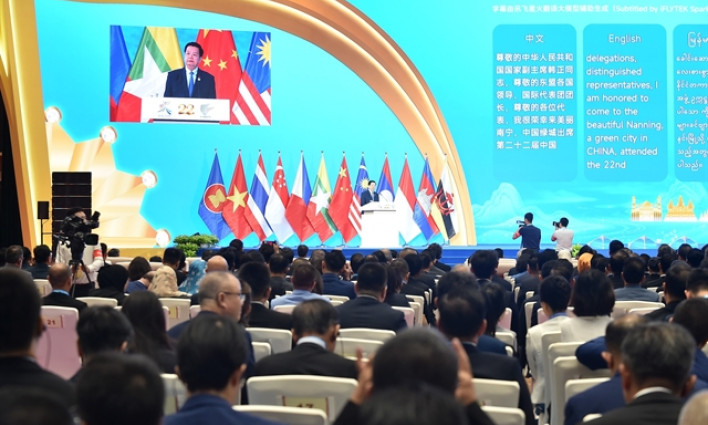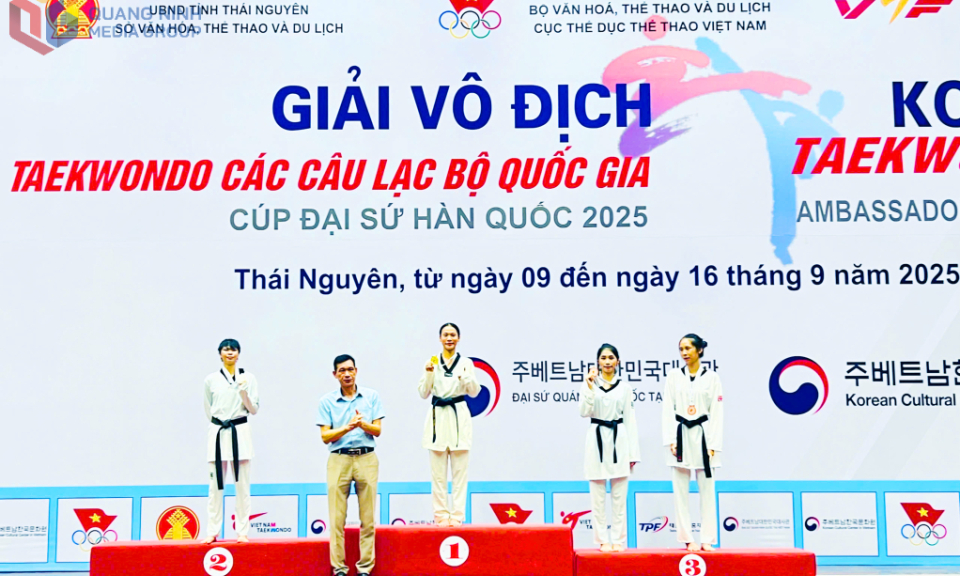Glamping gains popularity in Hanoi after pandemic
The pandemic has pushed camping out from a niche to a mainstream activity with many families spending lots of money on expensive tents and other gear.
In a tent near Suoi Chieu Lake in the northern Son La Province, Trang, 37, and her husband hug their two children, look at the night sky, tell each other stories, and then go to sleep.
The sounds of birds chirping wake them up early the next morning. She starts a fire, boils water, makes coffee, and then scrambled eggs and sausages for breakfast.
"Though this is my second camping trip here, it feels as refreshing as the first," she says.
Her family traveled 160-kilometer journey from Hanoi to Son La and their two trips were less than three months apart.

Trang's family began camping three years ago, taking along a self-propelled tent, some tarpaulins and food to an islet under the Vinh Tuy Bridge, Dong Mo Lake in Ba Vi District or Ecopark, a neighborhood famous for greenery in Hung Yen Province near Hanoi.
She was tired of being cooped up indoors when stay-at-home orders were in place to curb the spread of Covid-19.
So when the pandemic was brought under control, she wanted her children to go out more.
Before embarking on outdoor adventures, she went online and bought a lot of high-end glamping gear from Japan, Thailand, China, and the U.S.
Her husband was initially hesitant because he was concerned that the children would be too tired to enjoy the trip and that buying such expensive items would turn out to be a waste of money.
But the family had a lot of fun and some unforgettable memories and is now hooked on camping.
"We keep wanting to buy more gear to further elevate our camping experience," Trang says, noting that the cost of the family's hobby has so far been VND60 million (nearly US$2,600).

"We just want to spend time with our children before they grow up."
They now pack up and go every two weeks or so.
Glamping, or luxury camping, has become a global trend though only recently gaining popularity in Vietnam.
In contrast to the austerity or simplicity of traditional camping, glamping refers to picnics in the suburbs where travelers can rest in large and fancy tents fully equipped with high-class gear.
According to a report by Kampgrounds of America, the world's largest system of privately held campgrounds with more than 500 locations across the U.S. and Canada, the majority of people going glamping since 2019 have been husband and wife with one child (45 percent).
Glamping was commonly invested in by organizations and individuals to later rent out to customers when it first appeared in Vietnam.
Around a year ago affluent families started to buy glamping gear when planning a picnic.
"Customers are willing to spend hundreds of millions of dong on family camping gear," Viet Anh, owner of a luxury outdoor wear brand in HCMC, says.
Duc Tiep, the administrator of a camping group in Hanoi with over 8,000 members, says there is almost no limit when it comes to investing in camping gear.
Many families are investing in large rain- and wind-proof luxury tents, waterproof seats, soft cushions, inflatable boats, motor canoes, and even 16-seater vehicles that can be converted into mobile homes.
Tran Gam's family in Thanh Xuan District got into camping seven years ago and used to occasionally organize a simple trip close to home. However, when Covid appeared, the need to get close to nature became more pressing.
"After lockdown ended late last year, the children jumped for joy when they were able to go out of the house again," Gam, a mother of three children aged two to nine, says.

Initially the family rented camping equipment, but it was prohibitively expensive, and the stuff was old, dirty and unsafe. They decided to do their own shopping since they had young children.
They currently use a large Mongolian tent that is resistant to rain and wind, tables and chairs, a stove, a sun protection tarpaulin, an air mattress, pots, utensils, and things to decorate their tent.
"You can now carry every essential item when camping since everything is compact and small and easy to carry," Gam says, explaining that her family sees them as being similar to everyday necessities.
Her family began selling camping gear and supplies after she became "addicted" to this hobby.
People who go camping love nature, sports and travel, and especially want to go through experiences with their children, she says.
Most of her customers opt for low-cost packages that cost around VND10 million but have all the basic gear to get started.
"There are some who spend hundreds of millions of dong on camping equipment. Recently a couple who enjoys sports and lives in the suburbs bought a camping gear set for VND60 million to go glamping with their children and friends over the weekend."
Gam cannot go camping overnight because she has young children. So her family usually goes to places near Hanoi such as Ham Lon Mountain, Dong Quan Lake and Keo Ca Lake.
She found out those places were stunning, but visiting in the wrong season or when it is overcrowded could ruin the experience.
Her family visited Vinh Phuc Province twice but the first time it was raining too heavily and the second time was too crowded.
After going on dozens of trips, Trang's advice is to fully prepare, including by thoroughly researching the location one intends to visit, and investing in good camping equipment that will last long.
She also urges people to always collect their trash before leaving.
She says that her family only uses decomposable waste bags and never plastic.
"Returning to nature must also include a sense of protecting nature."






